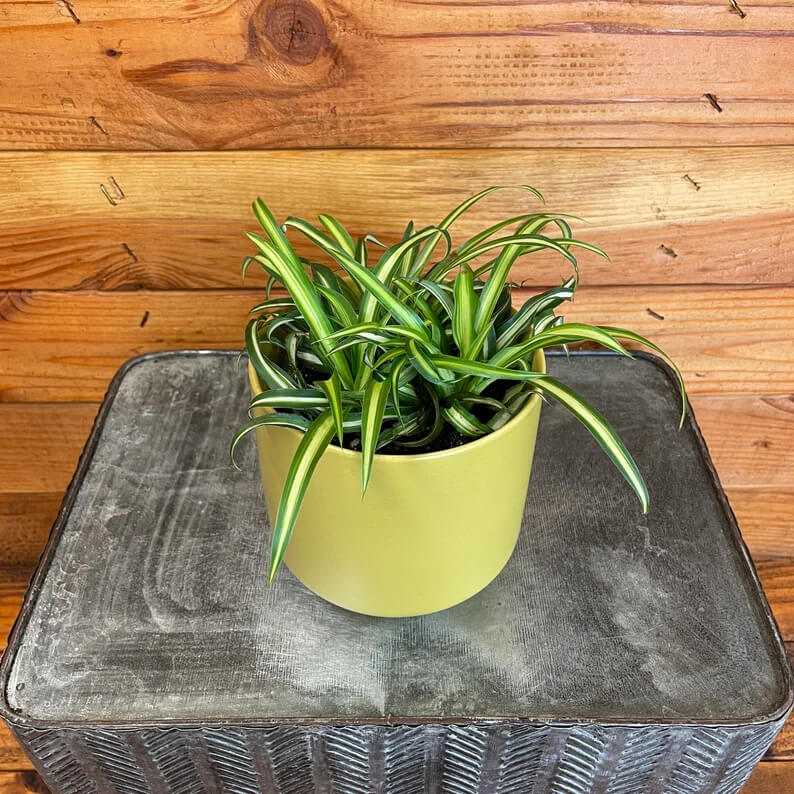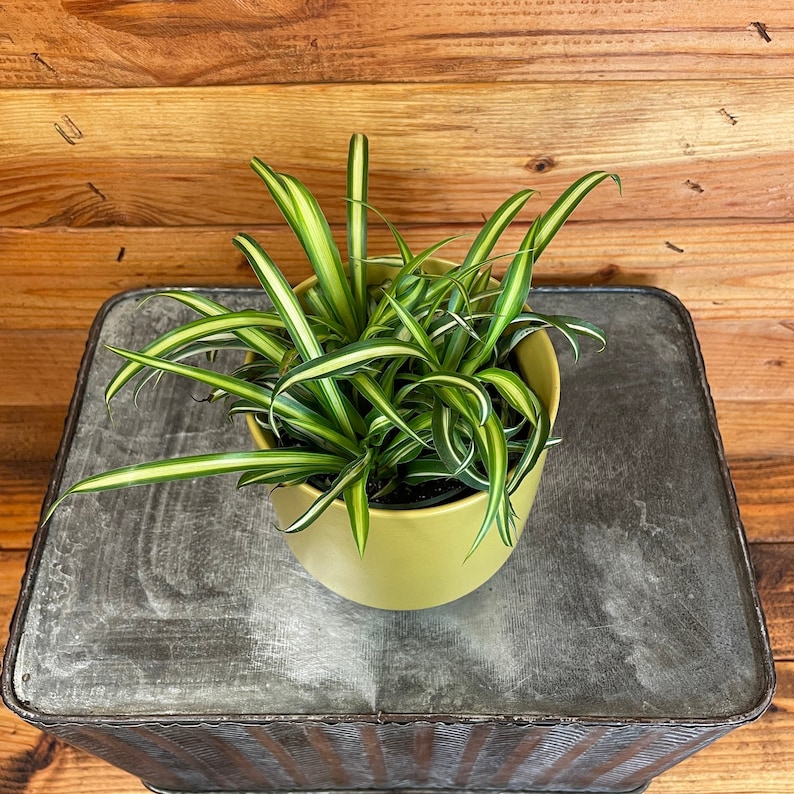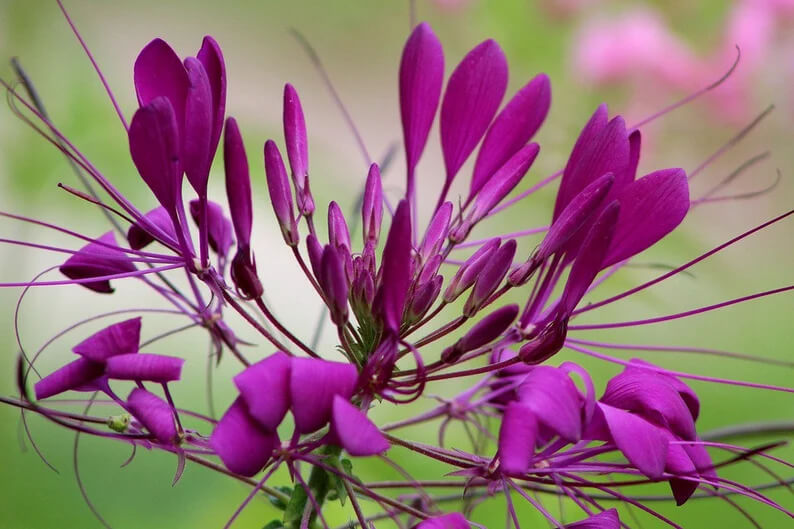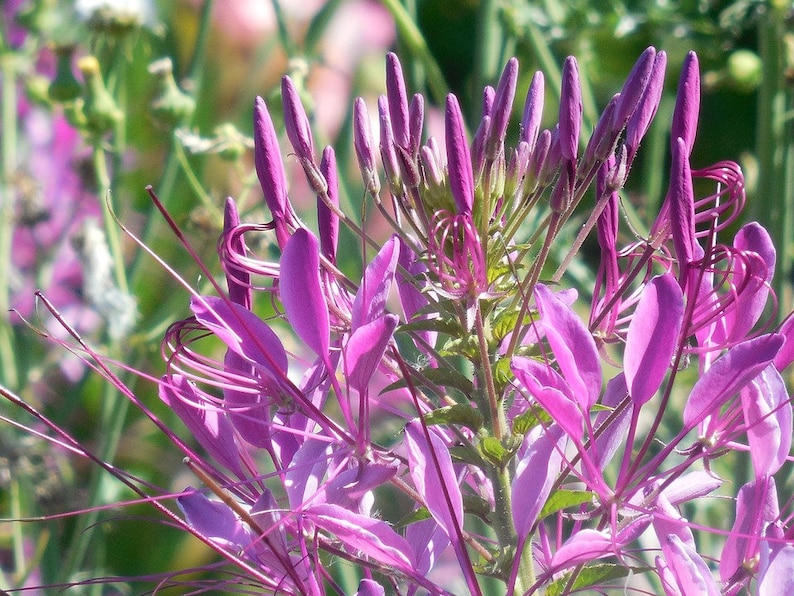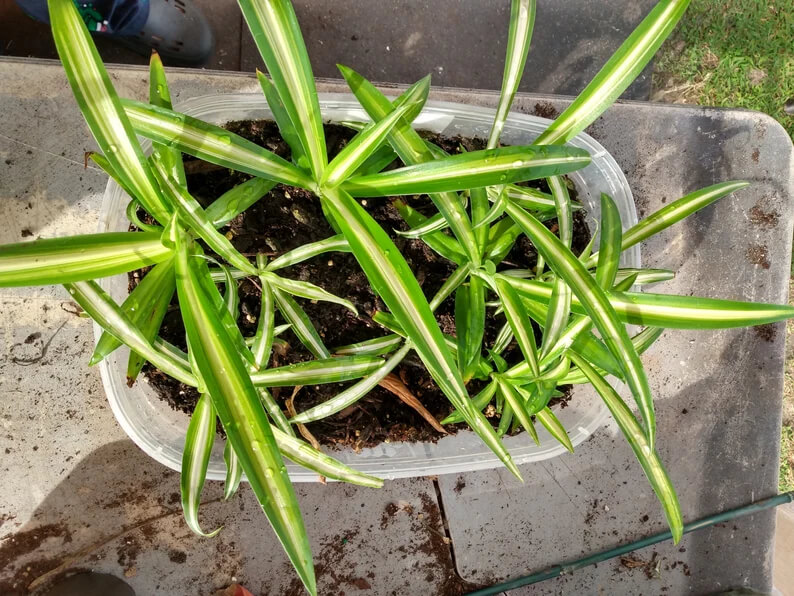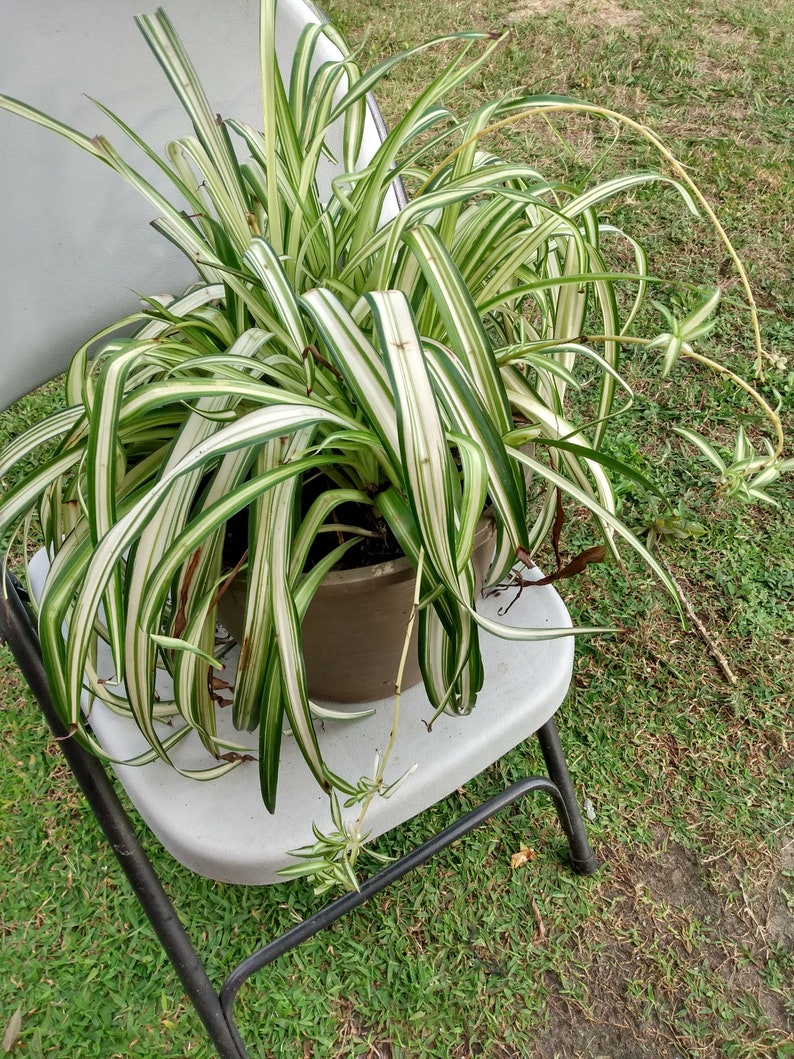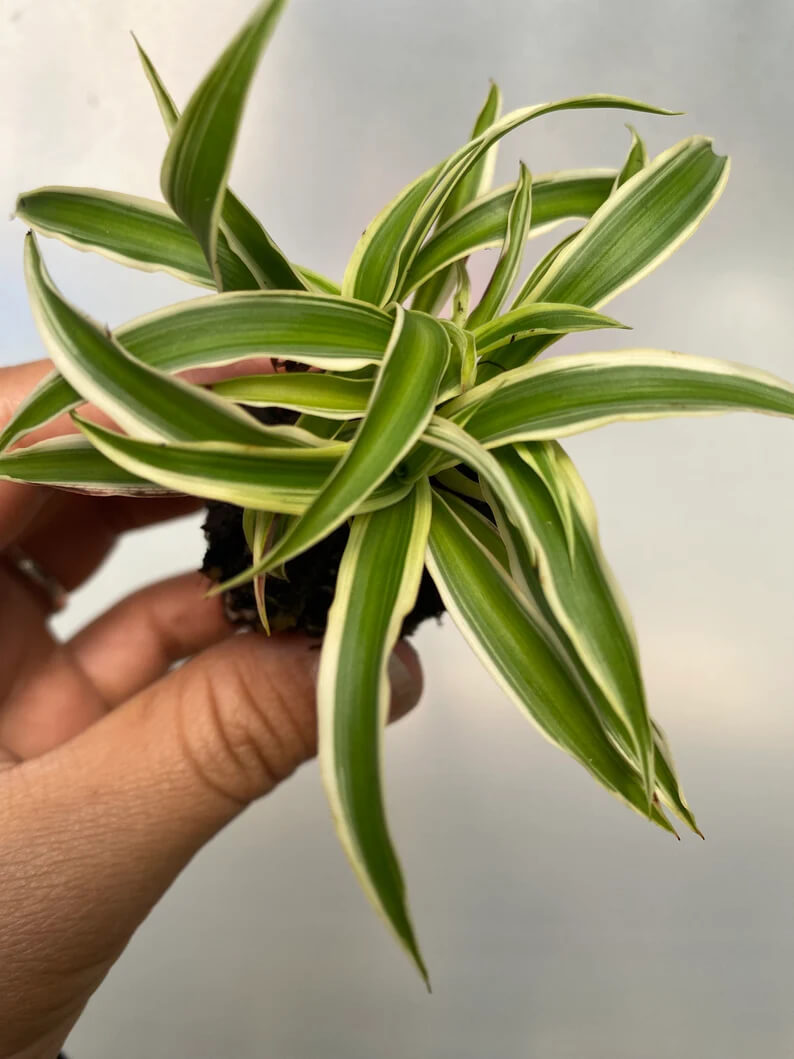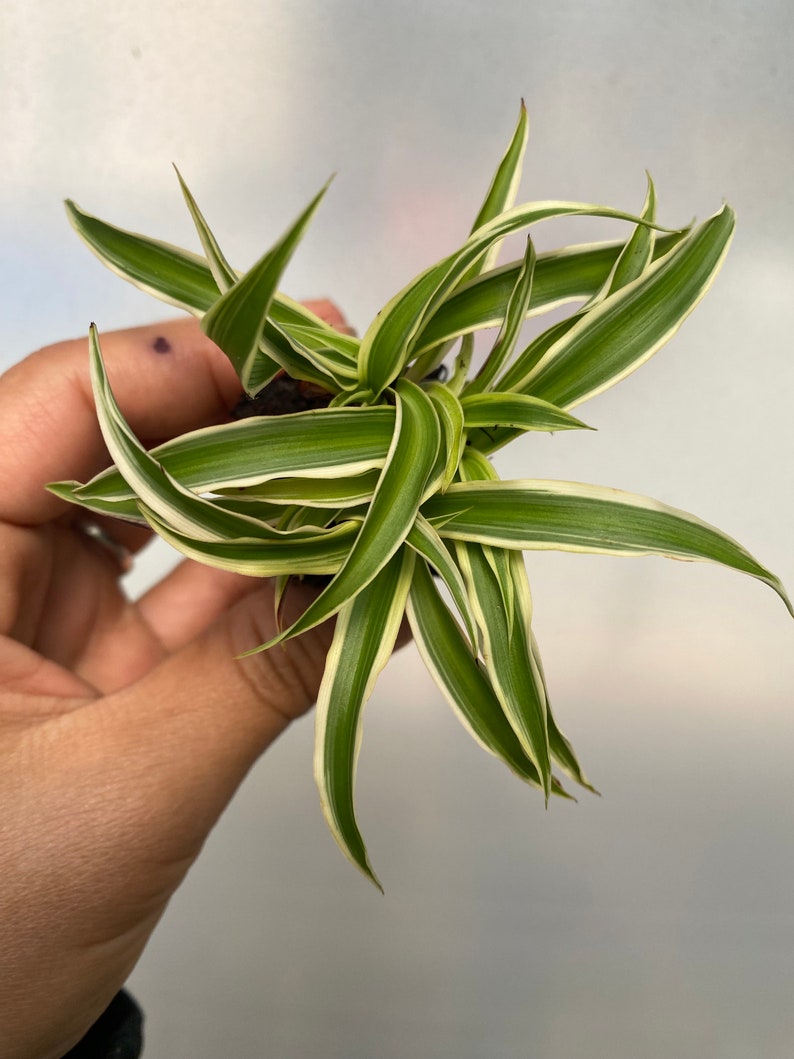Spider plants are popular houseplants found in numerous homes and offices because they are truly easy-to-care-for plants. Precisely because of the ease of care, it’s a perfect plant for beginners and for those people that don’t have a lot of time to dedicate to indoor gardening.
What’s even better, is that there are lots of spider plant varieties, so you can choose one that fits your taste or sense of style.
Spider Plant General Overview
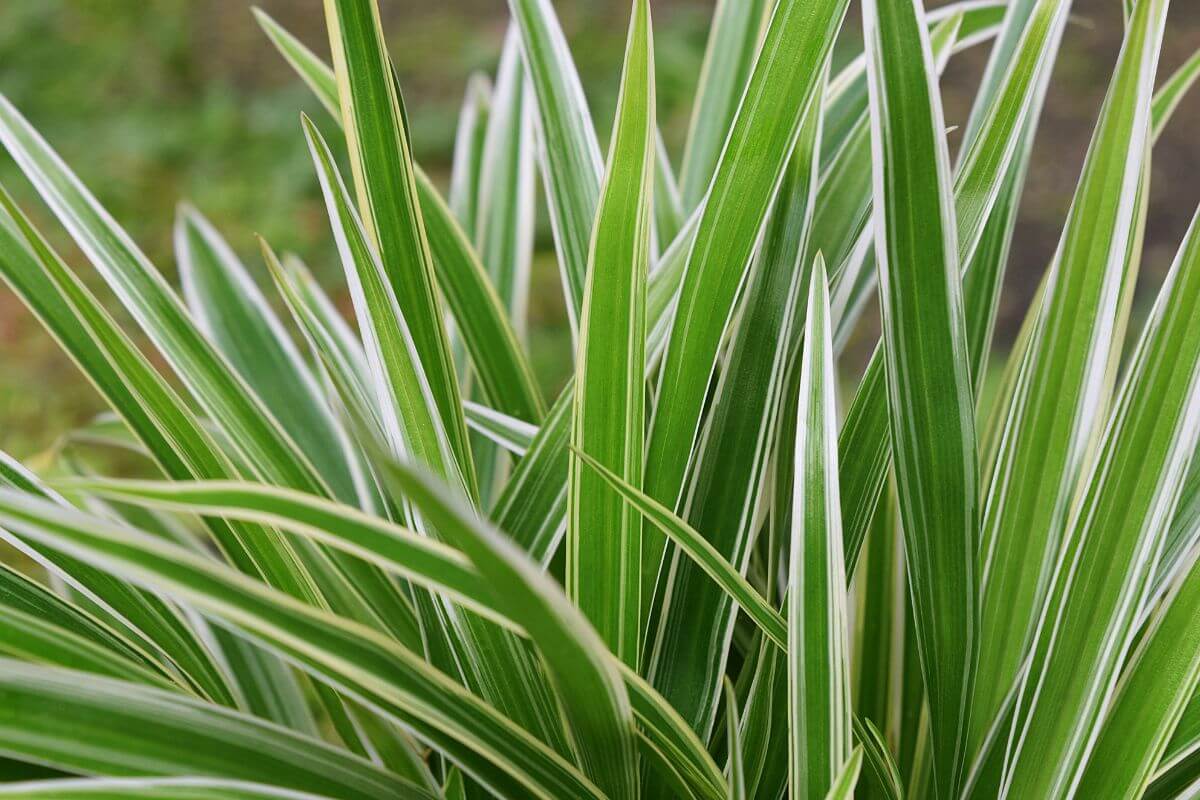
An evergreen perennial that is native to South Africa, the Spider plant is known botanically as Chlorophytum comosum. Popular names include the Airplane plant, Ribbon plant, Hen and Chickens, and Spider Ivy plant.
Members of the Asparagaceae family, spider plants generally will not grow much more than about 24 inches in height with foliage at a maximum of 18 inches. There are more than 200 hundred varieties of spider plants, and they all help improve the air quality around them.
With good maintenance, spider plants have an attractive appearance with leaves that grow upward and arch outward for a wildly unique appearance. They offer various non-variegated and variegated spider plants with combinations of green and white stripes.
Blooms are petite white flowers shaped like stars and this plant distinguishes itself by its production of the tiny plantlets that it grows. These can be detached from the mother plant and repotted to create new spider plants.
The spider plant will thrive when placed in a location where the foliage can cascade downward, so upper shelves and hanging baskets are ideal. This allows your plant to grow freely, accommodating long stems and leaves.
There are green versions, but they are rarer, and the most common varieties will feature some version of variegation. Also, some cultivars will feature foliage that is straighter or curlier. Curly leaves are a favorite of mine.
Appreciated for the low maintenance these plants require in terms of light, water, and feeding, the principal challenge is watering and specifically, not overwatering. Too much water can lead to root rot or fungal infections.
Spider plants are tropical plants and most varieties like high humidity and temperature ranges between 70° and 90°F. They can do well in direct light or partial shade environments.
Spider plants are also non-toxic to dogs and cats, so pet owners can rest at ease with one in the home.
Read our in-depth Spider Plant Care article for more information.
Most Popular Spider Plant Varieties
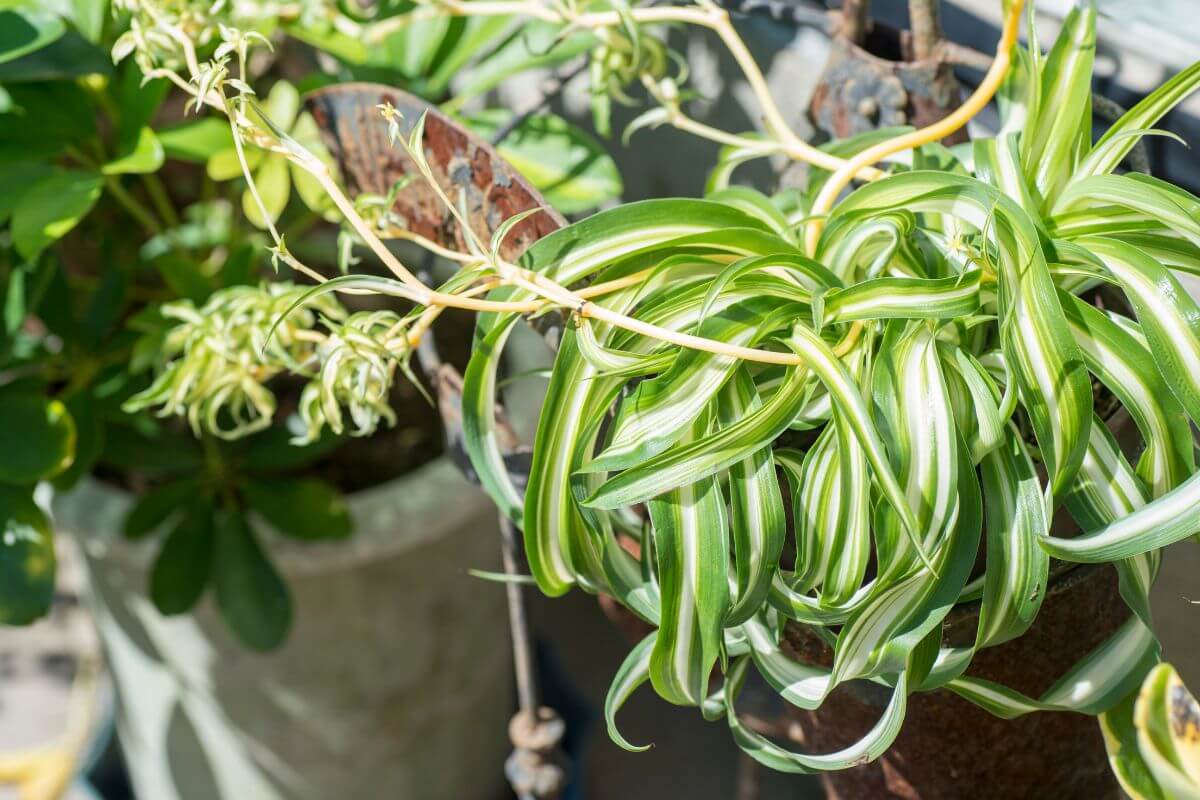
These are the common spider plant varieties that many people like to grow as indoor plants.
1. Bonnie Spider Plant (Chlorophytum comosum ‘Bonnie’)
The Bonnie Spider Plant will resemble the Vittatum type of spider plant, but the foliage is curlier and grows in a wave pattern. Some people will even refer to this plant as the “toilet plant.”
The smaller size of this variegated plant is ideal for more compact spaces. The Bonnie is a favorite of the curly spider plants featuring bright, curly, narrow leaves.
This variegated variety features foliage that grows from 8 to 18 inches tall and wide. The flower blooms are a lovely shade of yellow.
2. Atlantic Spider Plant (Chlorophytum comosum ‘Atlantic’)
The Atlantic Spider Plant cultivar features white-ribboned leaves that are edged with green. It will thrive in either shade or bright light and is exceptionally easy to maintain.
This variety of spider plant grows from 10 to 20 inches tall and 4 to 10 inches wide. The Atlantic is lovely when placed in a high position. That allows the striped leaves to cascade downward, it is beautiful in any setting.
3. Chlorophytum Spider Plant (Chlorophytum capense)
This is a plant that resembles the Chlorophytum comosum but does not share the typical hanging foliage of traditional spider plants. These leaves are narrow and pointed and are a solid green hue.
The chlorophytum spider plant will produce white, star-shaped flowers that thrives in partial shade to full sunlight. It is usually cultivated as a potted plant, growing to 1 foot tall and 2 feet wide.
4. Fire Flash Spider Plant (Chlorophytum amaniense ‘Fire Flash’)
The Fire Flash Spider Plant variety is also known as the “Chlorophytum orchidastrum Green Orange” or as the “Mandarin Orange” spider plant. It’s a beautiful plant with attractive foliage.
This is a rare spider plant variety featuring bright orange stems and very dark green broad leaves. This is a tropical and subtropical native found in both western and southern Africa. The flowers are small and white.
It requires bright indirect light and will not do well in direct sunlight. Be sure it gets well-drained soil to stay healthy.
5. Hawaiian Spider Plant (Chlorophytum viridescens ‘Hawaiian’)
The Hawaiian Spider Plant is often called the Golden Glow plant. This is a hybrid plant, so it tends to be a bit smaller than other cultivars.
This is a compact, small-sized spider plant that features green foliage. Its leaves are glossy and boast gorgeous shades of champagne to yellow on the center stripe.
It needs to be cultivated in a moist soil bed that is well-draining. It can grow up to one foot tall and thrives in both direct light and partial light shade.
6. Ocean Spider Plant (Chlorophytum comosum ‘Ocean’)
The Ocean Spider Plant is also a compact plant and beautiful in hanging baskets. Its green leaves are thin with creamy white margins and edges. They’ll grow up to 8 inches long and wide.
It also blooms tiny white, star-shaped flowers. Baby plantlets will grow on long stems and cascade downward.
The Ocean plant is one that likes to be kept drier during the winter and its dormancy period. Be careful of overatering this one.
7. Purple Spider Plant (Cleome hassleriana)
The Purple Spider Plant, also known as the “Violet Queen”, this plant’s foliage is fragrant and has a green color that is similar to that of a palm.
They are also known as the Purple Flower Spider Plants because they produce attractive violet flowers with a sweet fragrance.
Growth is extensive and impressive. This plant is stunning when in bloom. They can grow up to 4 feet tall and 2 feet wide.
Learn more in this in-depth Purple Spider Plant Care Guide.
8. Reverse Variegatum Spider Plant (Chlorophytum Comosum ‘Variegatum’)
Commonly known as the Reverse Spider Plant, this particular variegated variety is a favorite among gardeners. They will grow to a nice size, up to 2 feet tall and wide.
It’s called Reverse because it looks like the reverse version of the “Vittatum” variety. It boasts curvy striped leaves that have a dark green stripe in the center and bright white edges.
9. Shamrock Spider Plant (Chlorophytum comosum ‘Shamrock’)
The Shamrock Spider Plant is rare and boasts a solid green color. It can easily thrive both indoors and outdoors, but will grow faster outside.
They are beautiful in hanging baskets, but are also nice as potted plants. The Shamrock will grow up to 8 inches wide and tall.
10. Variegated Bonnie Spider Plant (Chlorophytum comosum ‘Bonnie Variegated’)
The Variegated Bonnie Spider Plant has lilting arched green, long, thin foliage featuring creamy colored edges that look lovely in any location.
It is a great option for hanging baskets or it can be paired with other houseplants for an enjoyable green area in your home décor. Their green leaves will grow to 8 inches high and wide.
This particular cultivar is good for beginner gardeners for its ease of care.
11. Vittatum Spider Plant (Chlorophytum comosum ‘Vittatum’)
The Vittatum Spider Plant is one of the most popular varieties of the spider plant collection.
It is an evergreen perennial spider plant variety that features broad, creamy vertical stripes on a medium green leaf. The foliage is a bit curved, and this plant will grow as much as two feet wide and long.
It is drought-tolerant and needs well-draining soil. Find a slightly shaded location for the vittatum variety. These are able to grow in slightly lower temperatures, between 55° and 70°F, than other types of spider plants.
12. Zebra Spider Plant (Chlorophytum laxum ‘Zebra’)
The Zebra Spider Plant is a fast-growing variety of spider plants. Initially, the leaves will grow yellow edges that will turn white as the plant matures.
The Zebra cultivar not only makes for a great hanging plant, but also makes a splendid ground covering with its grass-like texture as well. The foliage will be shorter than other varieties. Its leaves will grow to 12 inches long and 18-24 wide.
They like well-draining, peat-based soil. It can be cultivated in full sun, but also does well in partial shade. It enjoys a temperature range between 65° and 75°F.
Best Spider Plant Varieties for Indoors
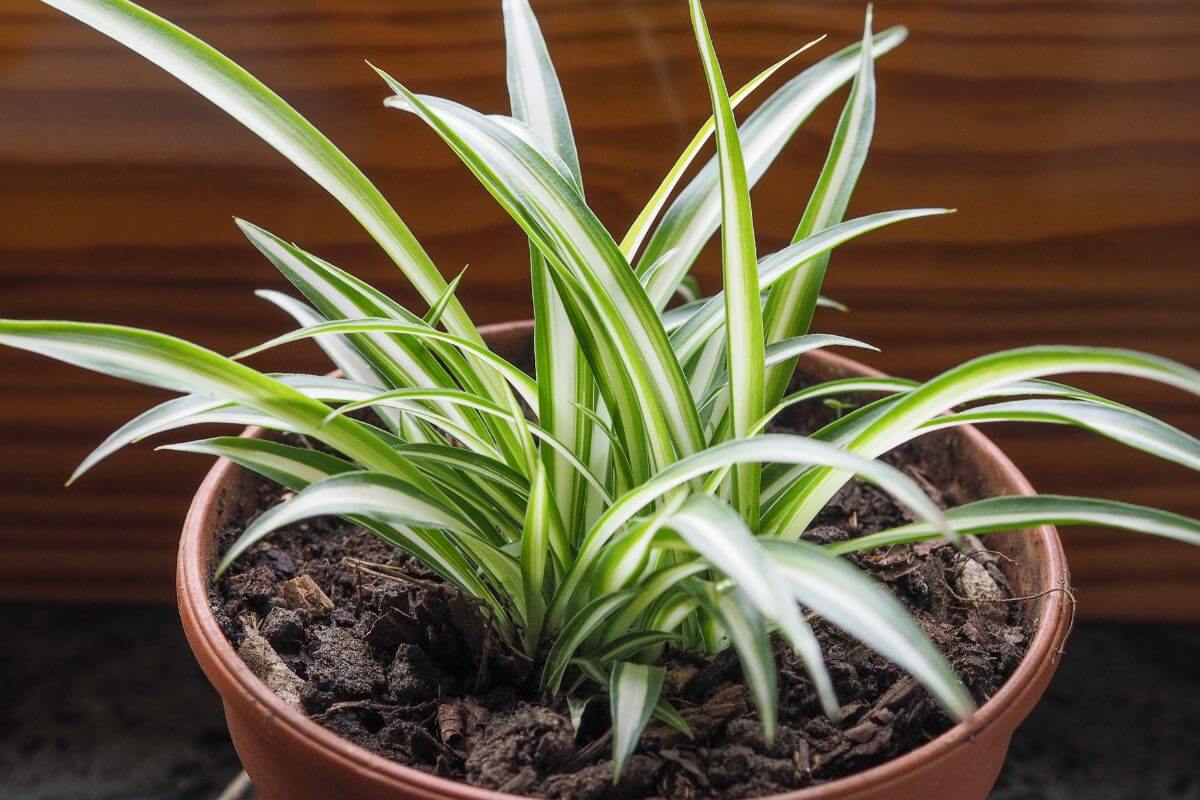
Spider plants love warmth and high humidity, and prefer temperatures between 55° and 80°F, so they do exceptionally well as houseplants. Spider plants can still be grown outdoors in USDA hardiness zones 9-11.
While all spider plant varieties are attractive and somewhat resemble each other, not all varieties may be ideal for indoor cultivation. Here are a few of the best types of spider plants for your indoor garden.
Some of the most popular and best for indoor cultivation include:
- Chlorophytum comosum ‘Bonnie’ – This compact version of a spider plant has leaves that curl loosely. Characterized by a beige stripe down the middle with green margins, leaves are very attractive. The flowers bloom yellow. It is an ideal variety for apartment gardens because the plant size remains compact.
- Chlorophytum comosum ‘Variegatum’ – Featuring a green stripe down the middle with cream-colored edges on either side, this is a stunning spider plant to have in your home or office. It has long green stems, and is commonly cultivated indoors because maintenance requirements are minimal in the fall and during winter. Leaves are thin and the height can reach a manageable 10 inches for indoor spaces.
- Chlorophytum comosum ‘Vittatum’ – The Vittatum spider plant features foliage with a white center stripe and medium green edges. Its stems are long and white. This variety is predominantly grown indoors, although it does expand a bit more than basic compact cultivars. Appreciated for its curvy leaves, it does well in low-light situations and is drought resistant if you forget to water it.
Spider Plant Varieties Final Thoughts
A spider plant, regardless of the cultivar, is an attractive houseplant to keep in your home or office. Most are great to place on higher shelf positions or hanging baskets, because of their beautiful arching leaves. Although a few can be grown as potted plants too.
With over 200 types of spider plant varieties, selecting a cultivar can be an exciting challenge. Here we have discussed some of the most popular and common varieties available in local nurseries and garden shops. A well-cared-for spider plant can make a stunning conversation piece for your home or place of business.
Learn more about spider plants in these other articles:


